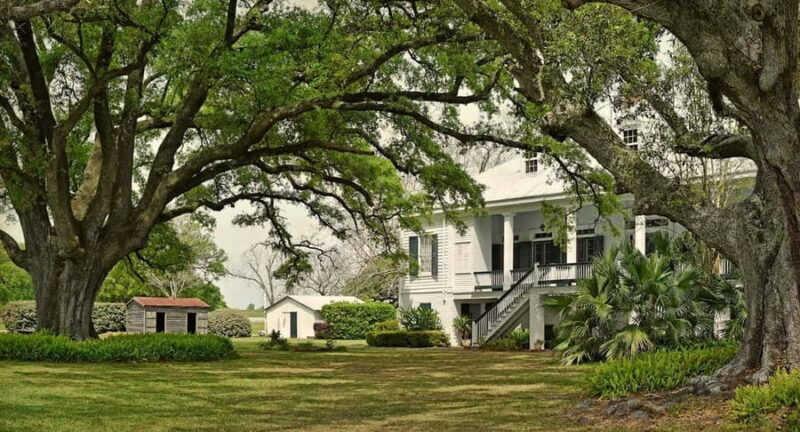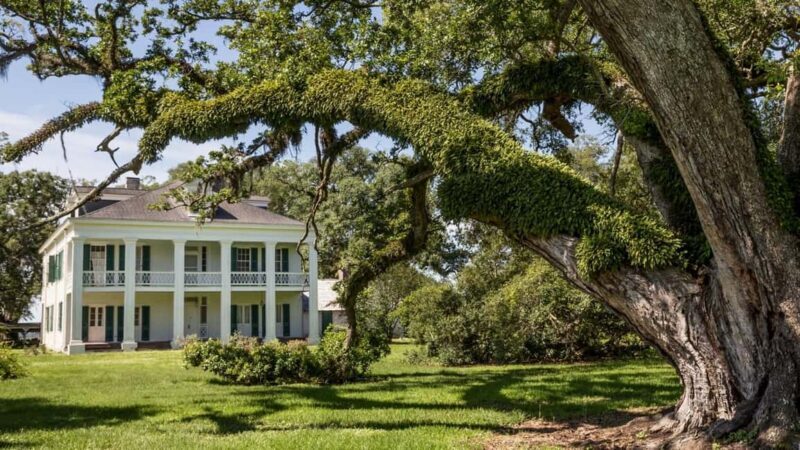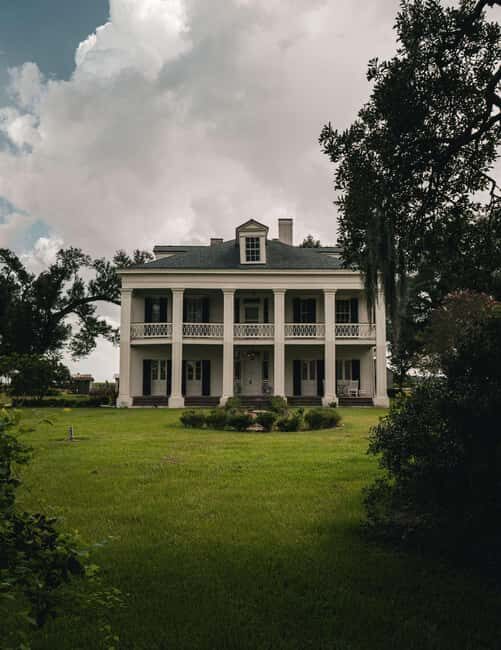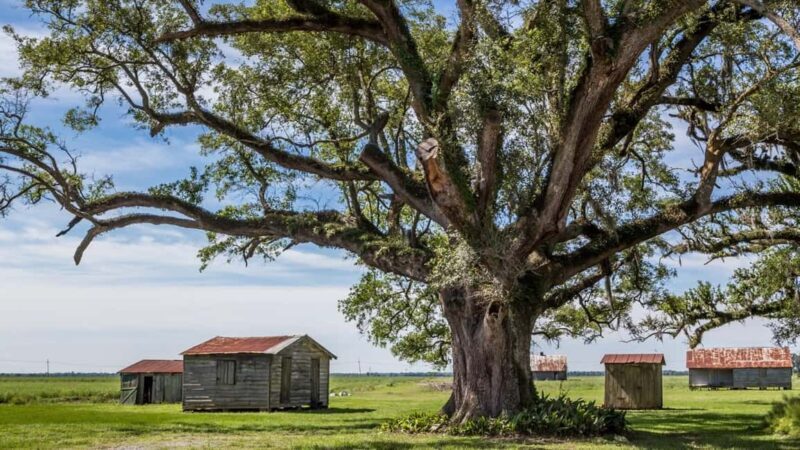Exploring Louisiana’s Past: A Guided Tour of St. Joseph and Felicity Plantations

If you’re seeking an authentic glimpse into Louisiana’s plantation era, the St. Joseph and Felicity Plantations tour offers a compelling mix of history, architecture, and storytelling. For $46 per person, in just about three hours, you’ll visit these historic sites, learning about the families, the enslaved people who built the plantations, and the ongoing legacy of sugar farming. The tour is led by knowledgeable guides—like the friendly Mike—who bring the history alive with genuine passion.
What we love most about this experience is how it balances historic preservation with candid stories of hardship and resilience. The chance to walk through original Creole architecture and see family furnishings at St. Joseph makes history feel real. Plus, Felicity’s role as a film location adds a fun pop culture twist, giving you a behind-the-scenes look at movie and TV sets.
A possible consideration is the walking involved—the tour involves navigating through historic buildings, outbuildings, and uneven grounds, so it’s best suited for those comfortable with moderate walking. It’s perfect for history buffs, architecture fans, or anyone curious about the true story of Louisiana’s plantations beyond the romanticized images.
If you appreciate authentic, well-informed experiences that reveal both the grandeur and the human stories behind the buildings, this tour is a solid pick. It’s especially suitable for visitors eager to understand the complex history of the region while enjoying some of its most picturesque sights.
You can check availability for your dates here:Key Points

- Authentic Experience: Walk through original Creole architecture and family furnishings at St. Joseph.
- Layered History: Learn about the families, enslaved workers, and ongoing sugar farming traditions.
- Film Tie-ins: Felicity is a popular filming location, adding a Hollywood connection.
- Insightful Guides: Guided by knowledgeable narrators who share honest stories, including difficult truths.
- Active Farm: Watch sugarcane being cultivated, connecting past and present.
- Balanced Tour: Combines architecture, history, and film without feeling rushed.
Appreciate having local insight? Here are other guided experiences in Vacherie we've examined
A Full Breakdown of the St. Joseph and Felicity Plantations Tour

The Starting Point: St. Joseph Plantation
Your journey begins at St. Joseph Plantation, built in 1830. This is one of the few plantations still owned by descendants of the original family, which means you’re seeing a site with generations of stewardship. As you step inside, you’re greeted by impressive Creole architecture—wide galleries, intricate woodwork, and original furnishings that make the past feel immediate.
One of our favorite aspects here was learning about the families who lived and worked these lands, along with the stories of the enslaved men, women, and children who built the estate. The guides do a commendable job of balancing respect for these difficult stories while providing historical context. You’ll have the opportunity to explore original outbuildings, including slave cabins—a sobering but crucial part of the experience.
The interior rooms reveal what life was like, with period-appropriate family furnishings that evoke a sense of continuity through generations. The wide galleries provide ideal spots for photos and contemplating the vastness of the property. The outbuildings are equally revealing, giving insight into the daily work and resilience of those who endured slavery here.
Transition to Felicity Plantation
Just a short drive from St. Joseph, you arrive at Felicity Plantation, constructed between 1844 and 1847. This site is a feast for architecture lovers: a blend of Greek Revival and Creole influences, reflecting Louisiana’s cultural crossroads. The house’s elegant columns and symmetry make it a striking sight.
Felicity’s history is deeply intertwined with sugarcane cultivation, a legacy that continues today. The plantation still functions as an active sugar farm, with descendants of the original owners managing the land through a family-run corporation. Watching the fields stretch out, you can appreciate how sugar remains central to the region’s economy and history.
More Great Tours NearbyFilming and Pop Culture
Felicity is also a notable film and TV location, having appeared in productions like “12 Years a Slave,” “The Skeleton Key,” “Roots,” “Underground,” and “Filthy Rich.” Tourists often enjoy a photo stop on the grounds, imagining how the same halls played roles in cinematic storytelling.
What the Tour Offers Beyond the Surfaces
This isn’t a superficial walk-through of fancy houses. Instead, the guides—like Sarah—share layered stories of wealth, hardship, and perseverance. They discuss the realities of slavery, the lives of laborers, and the family histories that shaped these lands. It’s a well-rounded perspective that helps you see beyond the picturesque facades.
Logistics and Practicalities
The tour starts at St. Joseph on the hour, with check-in inside the mansion, and then moves to Felicity on the half-hour. You’ll need to arrive about 15 minutes early to check in and settle in. The total duration is around three hours, which is a manageable chunk of time for most travelers.
The group size is typically small to medium, allowing for personalized attention. Since the plantations are still part of an active sugar farm, you’ll see working fields and outbuildings, giving you a real sense of ongoing life on the land.
The price of $46 offers solid value considering the depth of history, the access to original structures, and the stories shared. Plus, the option to cancel up to 24 hours in advance makes it flexible should your plans change.
Why This Tour Is Worth Your Time

This tour does a fine job of balancing history, culture, and scenery. The stunning views of the sugar fields, combined with the authentic architecture, make it a visually pleasing experience. The guides’ storytelling makes the history accessible and honest, including the tough parts that are often sanitized elsewhere.
It’s particularly valuable for those interested in the social history of the South, as it addresses the slave experience and the legacy of slavery and labor head-on. The chance to see a working sugar farm adds a layer of authenticity that many travelers miss on more superficial plantation visits.
Who Should Consider This Tour?
If you’re looking for an educational, respectful exploration of Louisiana’s plantation era, this tour fits the bill. It’s ideal for history enthusiasts, architecture admirers, and film buffs interested in the Hollywood connection. It also suits travelers who want an active experience, walking through original buildings and fields rather than just looking at photos.
Final Thoughts
The St. Joseph and Felicity Plantations Tour offers a comprehensive look at Louisiana’s plantation history, blending architecture, storytelling, and current farming practices. It’s a thoughtful and well-rounded experience that respects the past while making it relevant today. The guides’ ability to tell honest, layered stories makes this a meaningful activity—not just a sightseeing stop but a genuine educational journey.
While the walking can be moderate, the payoff is a deeply textured understanding of the complexities of plantation life—from grand homes to slave cabins. The film location aspect adds a fun and unique dimension, appealing to those interested in pop culture.
This tour is best for travelers seeking an authentic, insightful, and scenic exploration of Louisiana’s plantation roots. It’s a valuable experience that respects the difficult stories, celebrates resilience, and leaves visitors with a clearer picture of this complex chapter in American history.
FAQs
Is the tour suitable for people who dislike walking?
The tour involves some walking around the historic sites and uneven grounds, so it’s best suited for those comfortable with moderate activity.
Are the plantations still active farms?
Yes, both St. Joseph and Felicity are still part of an active sugar farm operated by descendants through a family-run corporation, connecting past to present.
Can I visit the plantations on my own?
While you can visit the sites independently, this guided tour offers in-depth stories and access to outbuildings and slave cabins that you might miss otherwise.
Is there a film or TV focus on the tour?
Yes, Felicity Plantation has appeared in several productions, which adds an interesting film connection to the visit.
What should I bring?
Comfortable shoes for walking and some water are advisable, especially since the tour covers outdoor areas and historic buildings.
Can I cancel my reservation if my plans change?
Absolutely. You can cancel up to 24 hours in advance for a full refund, offering flexibility in your travel plans.
This guided tour of Louisiana’s plantation heritage offers a balanced, insightful, and memorable experience. Whether you’re a history lover, a film fan, or simply curious about the stories behind these grand structures, it’s a journey worth taking.
You can check availability for your dates here:More Guided Tours in Vacherie
More Tours in Vacherie
More Tour Reviews in Vacherie
- New Orleans: Oak Alley Plantation Half Day Tour
- New Orleans: Oak Alley Plantation -N- Swamp Tour Full Day
- New Orleans: St. Joseph Plantation Guided Tour
- From New Orleans: Oak Alley or Laura Plantation Tour
- From New Orleans: Swamp Airboat, 2 Plantation Tours & Lunch
- New Orleans: Destrehan Plantation, Houmas House & Lunch
